-
 Bitcoin
Bitcoin $106,731.2224
-1.05% -
 Ethereum
Ethereum $2,444.9804
-1.20% -
 Tether USDt
Tether USDt $1.0003
0.01% -
 XRP
XRP $2.1882
0.09% -
 BNB
BNB $651.1435
-0.61% -
 Solana
Solana $148.3252
-2.09% -
 USDC
USDC $1.0000
0.01% -
 TRON
TRON $0.2787
0.55% -
 Dogecoin
Dogecoin $0.1598
-3.16% -
 Cardano
Cardano $0.5520
-2.43% -
 Hyperliquid
Hyperliquid $39.0960
-2.64% -
 Bitcoin Cash
Bitcoin Cash $516.9519
2.98% -
 Sui
Sui $2.7011
-2.95% -
 Chainlink
Chainlink $13.0582
-1.71% -
 UNUS SED LEO
UNUS SED LEO $8.9250
-2.53% -
 Stellar
Stellar $0.2359
-0.18% -
 Avalanche
Avalanche $17.3856
-3.73% -
 Toncoin
Toncoin $2.8095
-3.56% -
 Shiba Inu
Shiba Inu $0.0...01121
-1.95% -
 Litecoin
Litecoin $85.2795
-0.85% -
 Hedera
Hedera $0.1471
-2.15% -
 Monero
Monero $319.8004
1.12% -
 Dai
Dai $1.0001
0.01% -
 Ethena USDe
Ethena USDe $1.0001
0.02% -
 Bitget Token
Bitget Token $4.5344
-1.07% -
 Polkadot
Polkadot $3.3224
-2.96% -
 Uniswap
Uniswap $6.9697
-2.75% -
 Aave
Aave $266.1658
-2.25% -
 Pepe
Pepe $0.0...09414
-3.41% -
 Pi
Pi $0.4913
-3.29%
How to install a MetaMask Snap?
MetaMask Snaps are open-source extensions that enhance wallet functionality, allowing users to connect to dApps, manage NFTs, and interact with new blockchain protocols securely.
Jul 01, 2025 at 04:07 pm
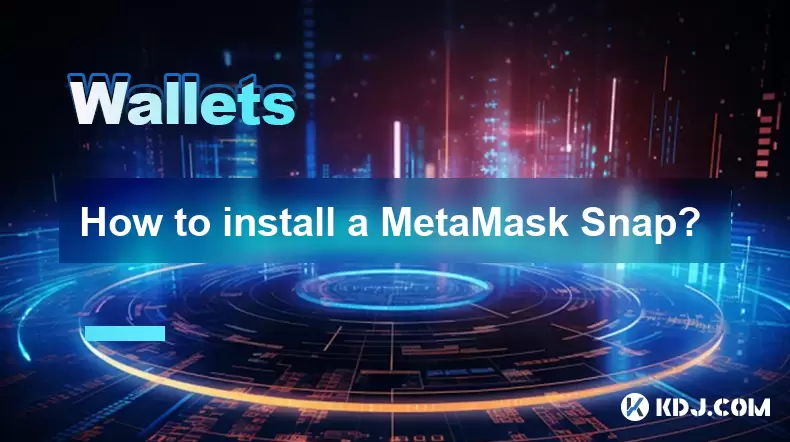
What is a MetaMask Snap?
A MetaMask Snap is an open-source, permissionless software component that extends the functionality of the MetaMask wallet. Snaps allow developers to create custom features, integrate with new blockchain protocols, or enhance security and privacy options for users. Installing a Snap can enable capabilities such as connecting to a specific decentralized application (dApp), managing non-fungible tokens (NFTs) from a unique platform, or even interacting with layer-2 solutions.
Before proceeding with installation, ensure that you are using the latest version of MetaMask Flask, which is the experimental browser extension designed specifically for testing and running Snaps. Standard versions of MetaMask do not support Snaps.
Preparing Your Environment
To begin installing a Snap, you must first set up your environment correctly:
- Install the latest version of MetaMask Flask from the official GitHub repository.
- Ensure that your browser supports WebAssembly and Secure Contexts, as these are prerequisites for Snap execution.
- Familiarize yourself with the risks involved in running untrusted Snaps, including potential exposure to malicious code or unauthorized access to wallet data.
Once these conditions are met, you can proceed to locate and install the desired Snap.
Finding a Snap to Install
Snaps are hosted on various platforms, including GitHub repositories, npm packages, or directly through dApp websites. It's crucial to verify the source before proceeding with installation. You should only install Snaps from trusted developers or well-documented open-source projects.
When selecting a Snap, consider the following:
- Is the Snap open-source and audited?
- Does it have community reviews or endorsements?
- What permissions does it request, and are they reasonable for its intended function?
Always double-check the Snap’s URL or package name to avoid phishing attempts or counterfeit versions.
Installing a Snap via MetaMask Flask
The process of installing a Snap involves several steps that require careful attention to detail:
- Open MetaMask Flask and switch to the Snaps interface by clicking on the puzzle icon in the top-right corner of the wallet.
- Click on the “Install Snaps” button located at the bottom of the screen.
- Enter the Snap ID or HTTPS URL pointing to the Snap’s manifest file.
- Review the permissions requested by the Snap, such as access to accounts, transaction signing, or network information.
- Confirm the installation by clicking “Approve” after reviewing the warning about potential risks.
After installation, the Snap will appear under the “Installed Snaps” section and can be managed or removed from there.
Interacting with Installed Snaps
Once installed, a Snap may provide new interfaces or functionalities within the MetaMask wallet. These could include:
- A custom UI panel accessible from the wallet dashboard.
- Integration with specific dApps or blockchain networks.
- Tools for signing transactions, querying balances, or managing assets outside the standard MetaMask feature set.
You can interact with a Snap by navigating to its dedicated interface within the Snaps tab. Always monitor any prompts or requests made by the Snap, especially those involving private keys or sensitive operations.
Managing Installed Snaps
It is important to regularly review and manage the Snaps you have installed:
- Visit the Snaps management page in MetaMask Flask to view all installed extensions.
- Use the “Remove” option to uninstall any Snap you no longer trust or need.
- Check for updates manually if the Snap developer provides a new version with bug fixes or enhanced functionality.
- Monitor log outputs and error messages from Snaps to troubleshoot issues or detect suspicious behavior.
Remember, removing a Snap does not delete any associated data from your system automatically. If required, manually clear local storage or cache related to the Snap.
Frequently Asked Questions
Q: Can I install multiple Snaps simultaneously?
Yes, you can install multiple Snaps one after another. Each Snap operates in isolation due to sandboxed execution environments. However, installing too many Snaps may impact performance or introduce conflicting behaviors.
Q: Are Snaps compatible with mobile versions of MetaMask?
Currently, Snaps are only supported on desktop browsers via MetaMask Flask. Mobile support is not available at this time, although future updates may introduce limited functionality.
Q: How can I verify the authenticity of a Snap before installation?
You should always check the Snap’s source code on platforms like GitHub, look for digital signatures, and cross-reference community discussions on forums or social media channels. Some advanced users may also inspect the Snap’s manifest and bundle files for integrity.
Q: What permissions can a Snap request?
Snaps can request permissions such as:
- Access to account addresses
- Transaction signing capabilities
- Network information
- Storage read/write access
These permissions are displayed during installation, and you should only grant them if they align with the Snap’s intended use.
Disclaimer:info@kdj.com
The information provided is not trading advice. kdj.com does not assume any responsibility for any investments made based on the information provided in this article. Cryptocurrencies are highly volatile and it is highly recommended that you invest with caution after thorough research!
If you believe that the content used on this website infringes your copyright, please contact us immediately (info@kdj.com) and we will delete it promptly.
- Deutsche Bank's Bitcoin Custody Play: A New York Minute on Crypto Services
- 2025-07-01 22:30:12
- ZachXBT, Ripple, and RLUSD Adoption: A Deep Dive
- 2025-07-01 22:30:12
- Open XP Redemption on Optimism: Get Ready for OP Tokens on July 15!
- 2025-07-01 22:35:12
- Altcoins in June 2025: Data, Trends, and What's Next for Crypto
- 2025-07-01 21:30:12
- SUI Price Breakout Watch: Will 2025 Forecasts Hit the Mark?
- 2025-07-01 21:30:12
- BTCBULL: Riding Bitcoin's Bull Run to Crypto Glory
- 2025-07-01 20:30:11
Related knowledge
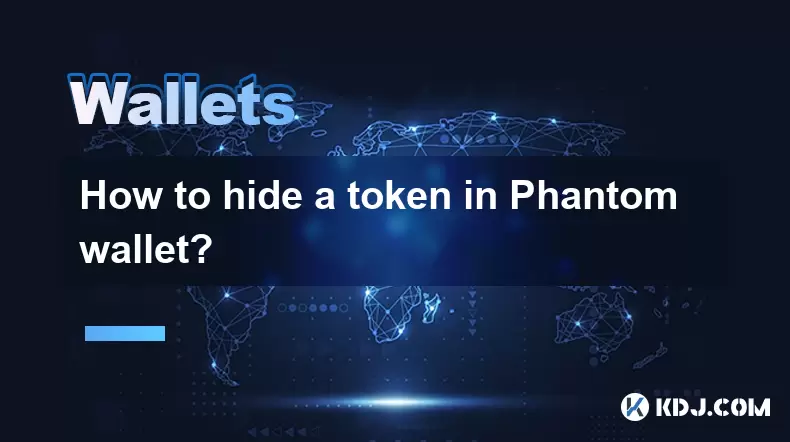
How to hide a token in Phantom wallet?
Jul 01,2025 at 05:49pm
Understanding the Phantom Wallet InterfacePhantom wallet is a popular non-custodial wallet used primarily for interacting with the Solana blockchain. It allows users to store, send, receive, and manage various tokens, including both fungible and non-fungible tokens (NFTs). Before attempting to hide a token, it's essential to understand how the wallet in...
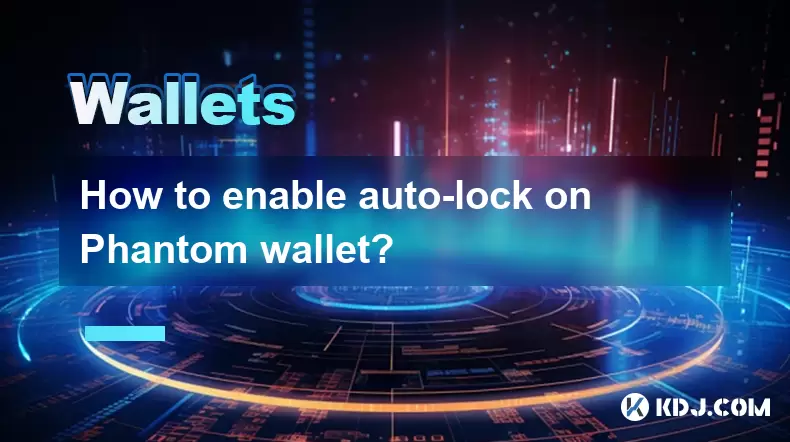
How to enable auto-lock on Phantom wallet?
Jul 01,2025 at 04:01pm
What is Auto-Lock in Phantom Wallet?Phantom wallet is a popular non-custodial cryptocurrency wallet used primarily for interacting with the Solana blockchain. One of its security features includes the ability to set an auto-lock timer, which ensures that the wallet locks itself automatically after a period of inactivity. Auto-lock enhances security by p...
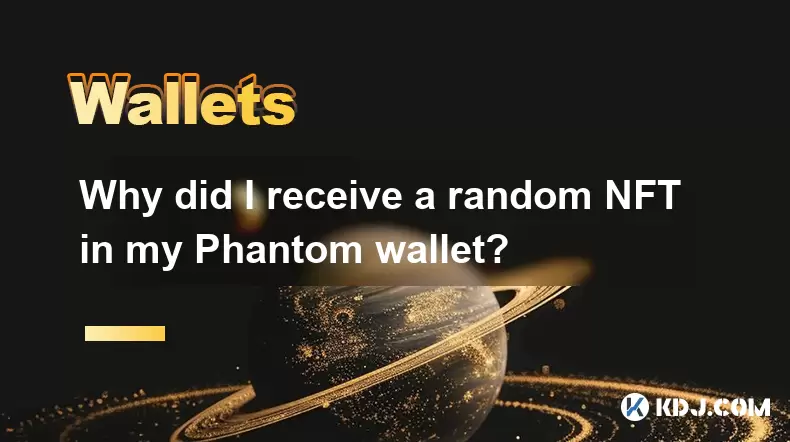
Why did I receive a random NFT in my Phantom wallet?
Jul 01,2025 at 09:00pm
Receiving an Unexpected NFT in Your Phantom WalletIf you've recently opened your Phantom wallet and noticed an unfamiliar NFT appearing in your collection, you're not alone. Many users have reported receiving random or unsolicited non-fungible tokens, often without any prior interaction with the project or sender. This phenomenon has become increasingly...
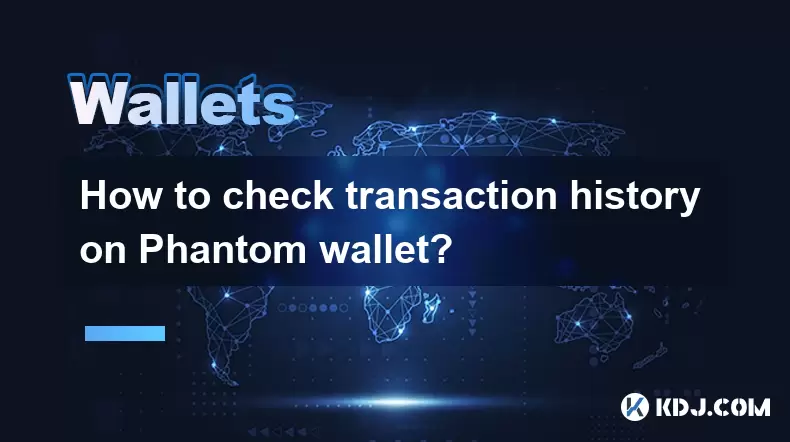
How to check transaction history on Phantom wallet?
Jul 01,2025 at 07:49pm
What Is Phantom Wallet?Phantom wallet is a popular non-custodial cryptocurrency wallet primarily used for interacting with the Solana blockchain. It allows users to store, send, receive, and manage their Solana-based tokens and NFTs securely. One of the essential features of any crypto wallet is the ability to check transaction history. Understanding ho...
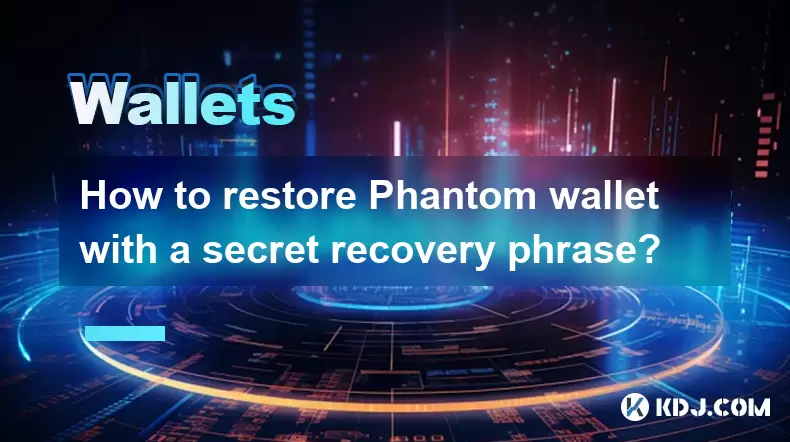
How to restore Phantom wallet with a secret recovery phrase?
Jul 01,2025 at 02:56pm
What is a Phantom wallet and why might you need to restore it?Phantom is a popular non-custodial cryptocurrency wallet primarily used for interacting with the Solana blockchain. It allows users to store, send, receive, and stake SOL tokens as well as manage NFTs and other SPL tokens. Since Phantom wallet is non-custodial, users are solely responsible fo...
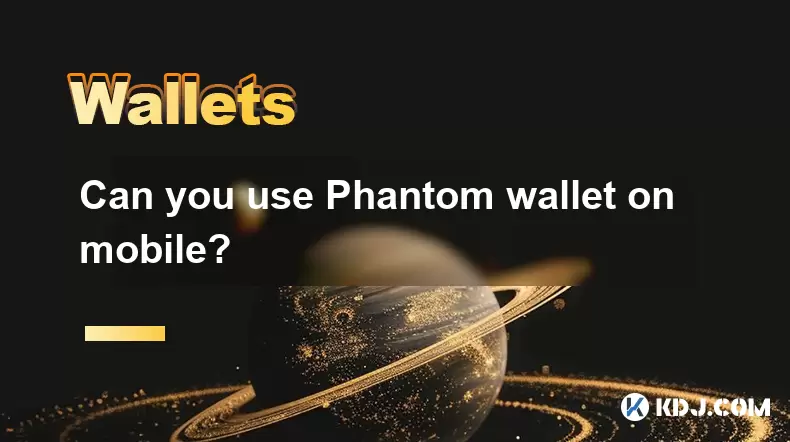
Can you use Phantom wallet on mobile?
Jul 01,2025 at 06:07pm
Understanding Phantom Wallet and Its Mobile CompatibilityPhantom wallet is a non-custodial cryptocurrency wallet primarily designed for interacting with the Solana blockchain. Initially developed as a browser extension, Phantom has expanded its functionality to include mobile platforms. This means users can access their Solana-based assets on mobile dev...

How to hide a token in Phantom wallet?
Jul 01,2025 at 05:49pm
Understanding the Phantom Wallet InterfacePhantom wallet is a popular non-custodial wallet used primarily for interacting with the Solana blockchain. It allows users to store, send, receive, and manage various tokens, including both fungible and non-fungible tokens (NFTs). Before attempting to hide a token, it's essential to understand how the wallet in...

How to enable auto-lock on Phantom wallet?
Jul 01,2025 at 04:01pm
What is Auto-Lock in Phantom Wallet?Phantom wallet is a popular non-custodial cryptocurrency wallet used primarily for interacting with the Solana blockchain. One of its security features includes the ability to set an auto-lock timer, which ensures that the wallet locks itself automatically after a period of inactivity. Auto-lock enhances security by p...

Why did I receive a random NFT in my Phantom wallet?
Jul 01,2025 at 09:00pm
Receiving an Unexpected NFT in Your Phantom WalletIf you've recently opened your Phantom wallet and noticed an unfamiliar NFT appearing in your collection, you're not alone. Many users have reported receiving random or unsolicited non-fungible tokens, often without any prior interaction with the project or sender. This phenomenon has become increasingly...

How to check transaction history on Phantom wallet?
Jul 01,2025 at 07:49pm
What Is Phantom Wallet?Phantom wallet is a popular non-custodial cryptocurrency wallet primarily used for interacting with the Solana blockchain. It allows users to store, send, receive, and manage their Solana-based tokens and NFTs securely. One of the essential features of any crypto wallet is the ability to check transaction history. Understanding ho...

How to restore Phantom wallet with a secret recovery phrase?
Jul 01,2025 at 02:56pm
What is a Phantom wallet and why might you need to restore it?Phantom is a popular non-custodial cryptocurrency wallet primarily used for interacting with the Solana blockchain. It allows users to store, send, receive, and stake SOL tokens as well as manage NFTs and other SPL tokens. Since Phantom wallet is non-custodial, users are solely responsible fo...

Can you use Phantom wallet on mobile?
Jul 01,2025 at 06:07pm
Understanding Phantom Wallet and Its Mobile CompatibilityPhantom wallet is a non-custodial cryptocurrency wallet primarily designed for interacting with the Solana blockchain. Initially developed as a browser extension, Phantom has expanded its functionality to include mobile platforms. This means users can access their Solana-based assets on mobile dev...
See all articles

























































































